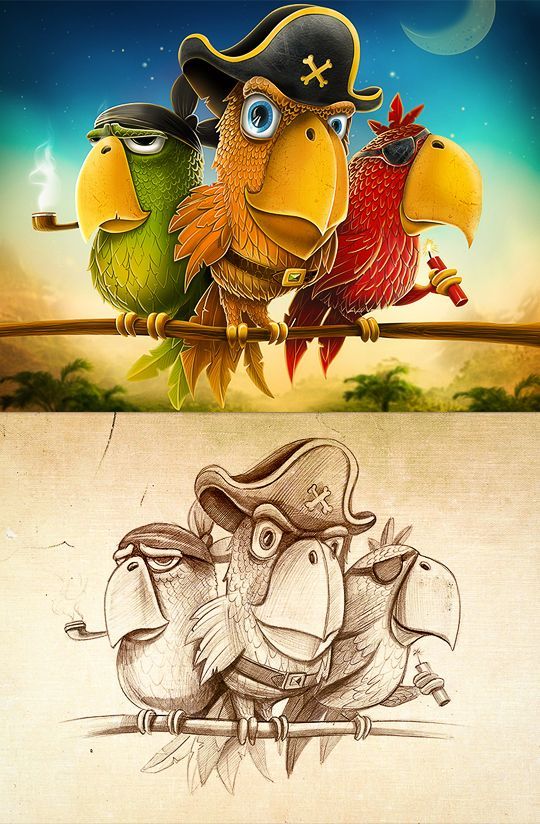Pirates and parrots
The Surprising Truth About Pirates and Parrots
A friend to pirates everywhere. (Photo: peasap/flickr)
Ever since Long John Silver clomped around on a wooden leg with a parrot on his shoulder, the literary and pop-culture conception of pirates has involved the parrot. But at this point, fact is very hard to separate from fiction. What, exactly, about a classic pirate Halloween costume—the parrot, the peg leg, the eyepatch, the bandanna, the snarling vaguely Scottish accent—is actually real? Is any of it real?
“The parrot trope is almost certainly grounded in reality,” says Colin Woodard, author of The Republic of Pirates: Being the True and Surprising Story of the Caribbean Pirates and the Man Who Brought Them Down. Long John Silver, the star of Robert Louis Stevenson’s
Treasure Island, was the first major fictional pirate character to walk around with a pet parrot, but this, according to Woodard and other experts in the field of classic piracy I spoke to, was based on real truths. And the reasons why the parrot became associated with pirates actually give us a pretty good glimpse at the real, true-life existence of a pirate during the Golden Age of Piracy.
Long John Silver, Jim Hawkins and his Parrot, from the 1911 edition of Long John Silver. (Photo: Public Domain/WikiCommons)
The Golden Age of Piracy, a period lasting from, in the broadest sense, the mid-1600s through around 1730, encompassed a few different major geopolitical and economic movements that created a space for pirates. For one, the discovery of the Americas and Australia led to a boom in exploration, which in turn led to an absurd amount of money and valuables being ferried across oceans. Money, gold, slaves, spices, and other highly prized goods (“goods,” in the case of slaves) traveled back and forth. They were comparatively unprotected, the vastness of the oceans and the miserable conditions of trans-oceanic journeys leaving them weak and vulnerable. And many former sailors, with deep knowledge of the sea, wondered why they should bother the difficult slog of ferrying goods when they could simply steal them.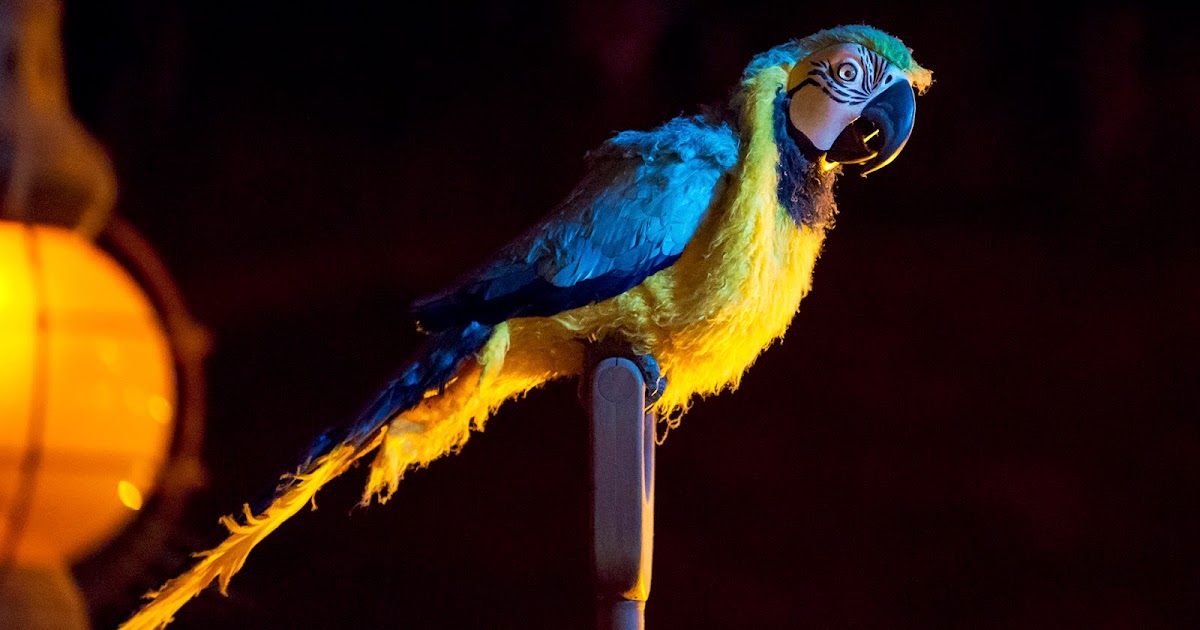
And so came the pirates.
Different portions of the Golden Age of Piracy, which is a term created by and endlessly argued over by pirate historians, resulted in different forms and different amounts of piracy. Angus Konstam, author of The History of Pirates and one of the foremost experts in the world, would prefer the term was restricted to an eight-year period from 1714 through 1722.
A French Ship and Barbary Pirates, c. 1615. (Photo: Public Domain/WikiCommons)
Regardless, pirates, depending as they did on robbing ships, mostly had to go where the ships were. They followed trade routes, which means they ended up in specific places; you didn’t see pirates flocking to deep South America or anywhere in the Pacific Ocean. They stayed with the ships, and ended up largely in the Caribbean, West Africa, and the Indian Ocean’s coasts.
On long trips, whether conducted legally or illegally, pets were desired but would need careful vetting.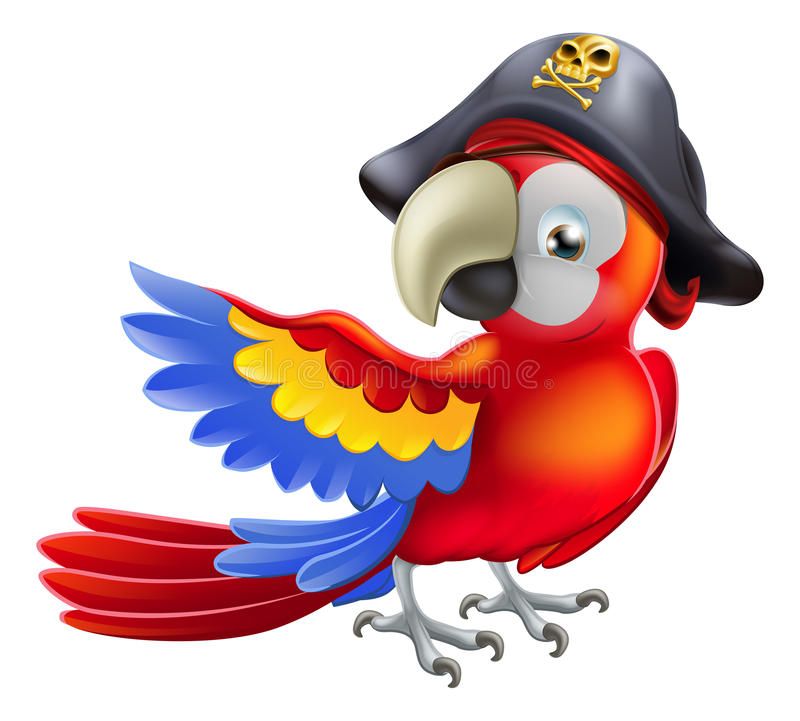 These long voyages, remember, could last weeks or months, and mostly, they were incredibly boring and uncomfortable. A companion animal could help ease the way. What kind?
These long voyages, remember, could last weeks or months, and mostly, they were incredibly boring and uncomfortable. A companion animal could help ease the way. What kind?
Capture of the Pirate Blackbeard, 1718. (Photo: Public Domain/WikiCommons)
“I would reason that any large pet would be difficult to keep on a seagoing vessel, but cats might very much be prized for their ability to catch vermin like rats in the holds, etc of a vessel,” says Woodard. David Head, author of Privateers of the Americas, told me: “I’ve never seen references to dogs. Dogs as pets was more of an aristocratic thing in the early modern period.”
But pirates were traveling to exotic lands, had quite a bit of free time, had disposable income, and thus had no particular reason to restrict themselves to ordinary European pets like cats and dogs. Monkeys were not uncommon, and the concept of a pet monkey made its way into fiction as well—Captain Barbossa, in the
Pirates of the Caribbean films, has one.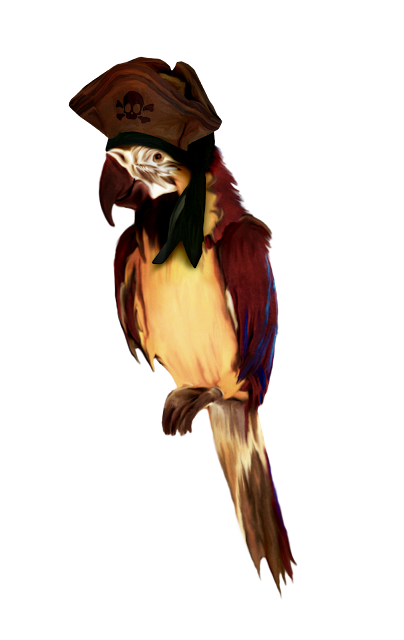 But a parrot was more sensible. They don’t eat much, compared to a dog or a monkey, and what they do eat (seeds, fruits, nuts) can be easily stored on board. They’re colorful, and intelligent, and funny, and for a pirate (or a legal sailor) wanting to show off in port, a parrot would do nicely.
But a parrot was more sensible. They don’t eat much, compared to a dog or a monkey, and what they do eat (seeds, fruits, nuts) can be easily stored on board. They’re colorful, and intelligent, and funny, and for a pirate (or a legal sailor) wanting to show off in port, a parrot would do nicely.
An engraving of Blackbeard the Pirate - but no parrot. (Photo: Library of Congress)
I asked the pirate experts I spoke to whether parrots would have been part of any sort of exotic pet trade. “Back home people would pay good money for parrots and other exotic creatures, and sailors could easily buy them in many Caribbean ports. Some were kept though, but most were sold when the ship reached home. They were colorful, they could be taught to talk—always entertaining—and they fetched a good price in the bird markets of London,” says Konstam. Woodard, though, noted that it might be tricky for a pirate to legally sell anything, especially an attention-grabbing item like a parrot from the New World.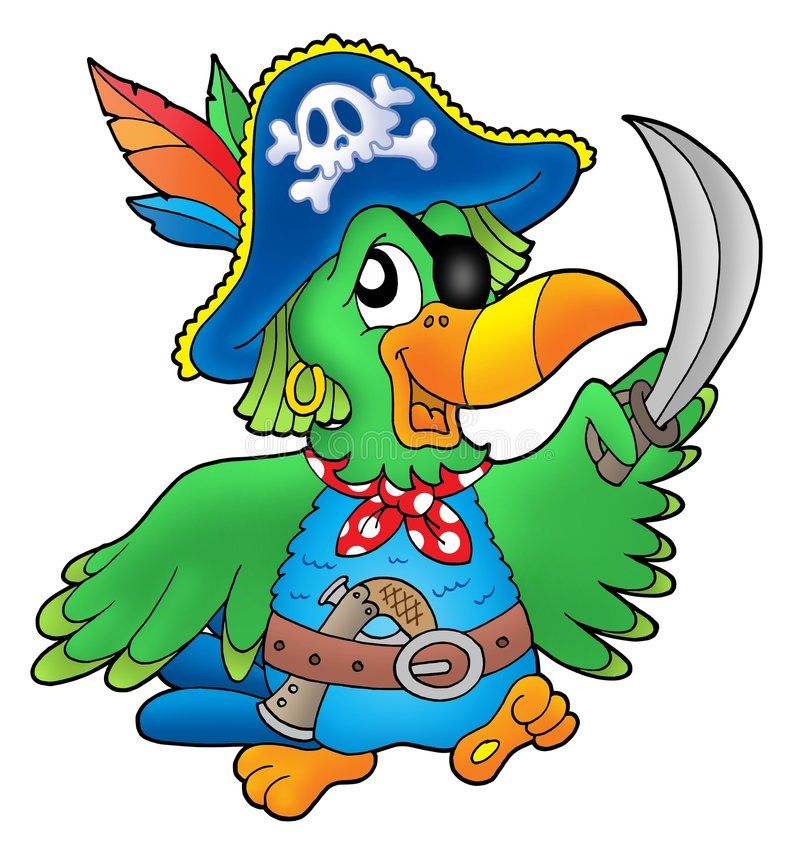 Cities like Boston and Charleston, where a parrot might be sold, were much smaller in those days, and pirates were often well-known and hunted criminals who would have a hard time entering the waterways of more populous cities like London.
Cities like Boston and Charleston, where a parrot might be sold, were much smaller in those days, and pirates were often well-known and hunted criminals who would have a hard time entering the waterways of more populous cities like London.
Konstam also noted one account from the early 18th century when William Dampier, a British explorer, noted that the best parrots came from near Vera Cruz, a coastal region of Mexico. Pirates may have changed but humans have not. Vera Cruz remains a hotspot for the illegal parrot trade, a place where thousands are illegally poached each year.
Why Are Parrots Associated with Pirates? [Facts vs. Fiction!]
When you think of pirates, the first image that comes to mind is a parrot. In fiction, they’re always squawking commands or whistling on the pirate’s shoulder.
Parrots are so associated with pirates that they’ve become a staple in fiction. That surely means that parrots were common pets for swashbucklers throughout history.
Parrots are linked to pirates mostly due to fiction. In Robert Louis Stevenson’s Treasure Island, the titillating character of Long John Silver had a pet parrot. Because the book was so famous, the following stories incorporated the established stereotypes.
In Robert Louis Stevenson’s Treasure Island, the titillating character of Long John Silver had a pet parrot. Because the book was so famous, the following stories incorporated the established stereotypes.
In reality, Long John Silver’s parrot was simply a nod to the thriving parrot trade of the 18th century. During this time, pirates would steal and sell parrots but rarely kept them as pets.
The wealthy upper class of Europe would pay a high price for parrots. Because of this, merchant ships transported parrots from South and Central America to the Old World.
When pirates intercepted and raided the ships, they could profit greatly. Some pirates may have kept parrots as companions and entertainment on their ships.
However, most kept parrots as cargo to sell later, like the rest of their stolen merchandise.
Did Pirates Really Keep Parrots?
Most pirates only sought out parrots as exotic goods to trade and wouldn’t have kept a parrot for themselves. After all, they could sell the parrots en masse for a hefty price.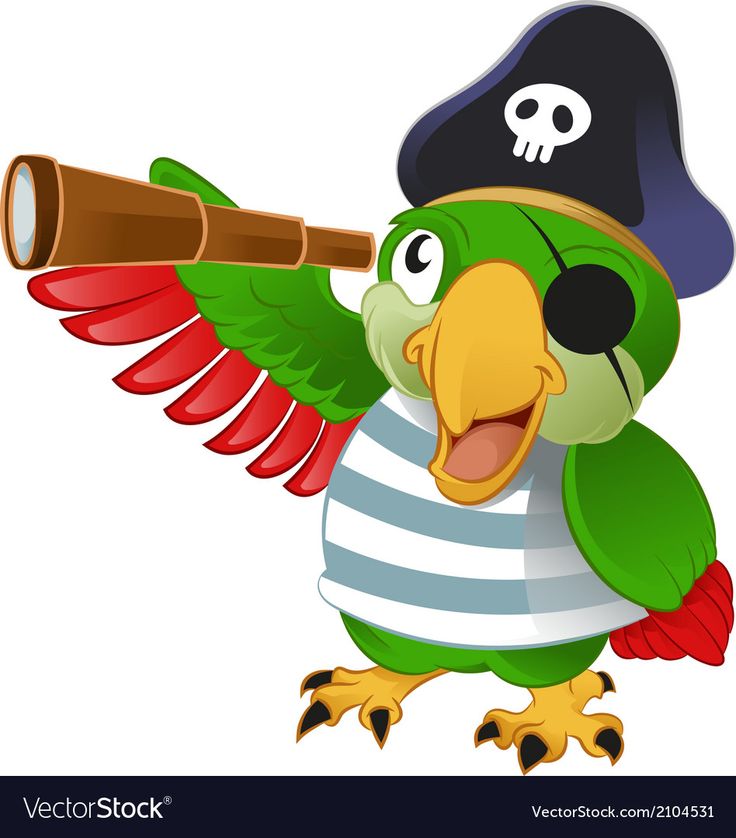
During the 18th and 19th centuries, there was a huge demand in the western world for parrots, especially in Europe. These were colorful, talkative creatures from Central and South America. Many nobles and richer merchant families were willing to pay handsomely to get their hands on an exotic pet.
Throughout the golden age of pirates, transporting goods and animals from the New World back to the Old World was lucrative. Ship owners and captains could make a fortune in the trade of parrots, spices, and materials.
Why Did Pirates Keep Parrots?
According to The Mariner’s Mirror, pop culture has oversold parrots as exotic companions for pirates. Finding them on the shoulder of a captain was a rare event.
The parrot trade played a huge role in how pirates fared in the 18th and 19th centuries. They used them as high-value goods that could expand their operations and fund their ventures.
The New World had a lot of unfamiliar goods and animals. Due to their colorful feathers and social qualities, parrots were among the most popular exotic animals in the West Indies.
Due to their colorful feathers and social qualities, parrots were among the most popular exotic animals in the West Indies.
Parrots were status symbols and impressively intelligent companions. They were even prized differently than parrots found in Asia.
According to Molecular Phylogenetics and Evolution, although the parrot trade thrived worldwide, New World parrots differed from Old World parrots.
Parrots from South and Central America had many advantages in looks, behavior, and genes. Pirate ships would acquire parrots during raids of merchant’s vessels in the New World.
They could improve their wealth and connections with this new cargo in tow.
Why Do Pirates Have Parrots On Their Shoulders?
Most pirates didn’t keep parrots on their shoulders, as the stereotype would have us believe. This trope comes from the antagonist in Treasure Island, Long John Silver.
He famously kept his parrot Cap’n Flint on his shoulder. The pirate stereotype bloomed from fiction rather than being influenced by fact.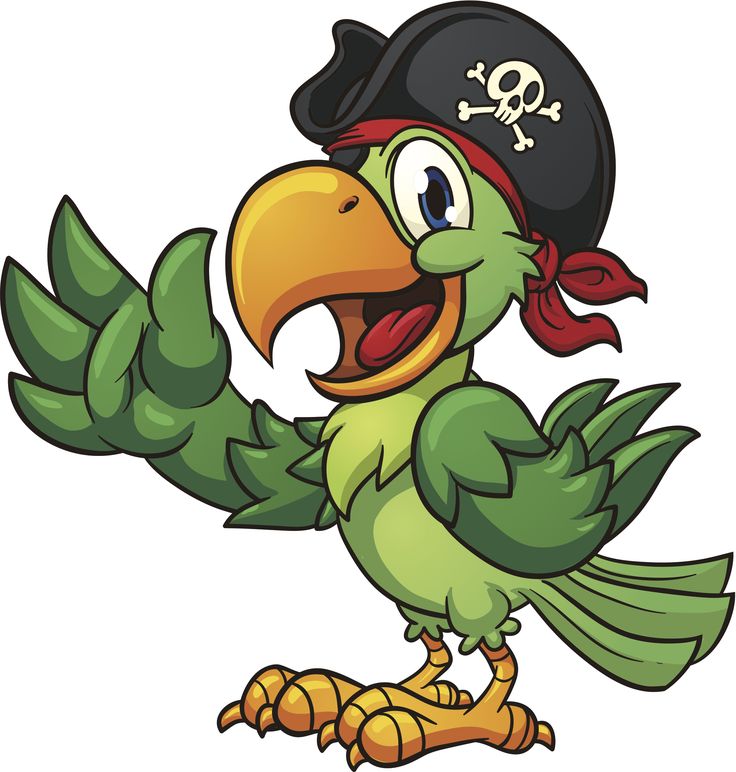
It’s possible that real pirates walked around with parrots on their shoulders, but not many accounts of this can be found. If it did happen, they intended to sell the parrot later, which was often the case with monkeys.
Pirates might entertain themselves by playing with them or letting parrots sit on their shoulders during the voyage. Once the ship reached a port where it could sell goods, parrots would be treated like any other cargo, and they would be sold for profit, and the pirate would return to work.
Reasons Why Pirates Have Parrots In Fiction
According to East Tennessee State University, it’s likely that the author of Treasure Island got his information about pirates from A General History of Pyrates. This is an 18th-century book about swashbucklers. The book mainly took its information from famous pirates like:
- Blackbeard
- Stede Bonnet
- Mary Read
- Anne Bonny
These people formed an egalitarian pirate republic in the Bahamas between 1717 and 1725.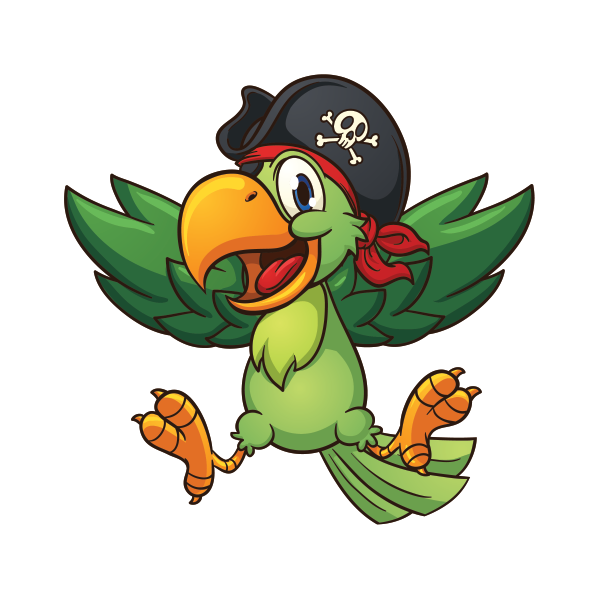 The gang of pirates heavily influenced the character Long John Silver in Treasure Island, and Cap’n Flint was featured in an act of creative license to reinforce the character’s place in the wealthy Atlantic trade.
The gang of pirates heavily influenced the character Long John Silver in Treasure Island, and Cap’n Flint was featured in an act of creative license to reinforce the character’s place in the wealthy Atlantic trade.
Many books, movies, and stories used Treasure Island as inspiration and reference. This made the small detail of parrots all the more prominent until they became inseparable from pirates.
We can also thank Treasure Island for popular clichés like:
- Eye patches on pirates
- Peg legs for pirates
- Harsh West Country English accents belonging to pirates
Parrots are associated with sailors in Daniel Defoe’s 1719 novel Robinson Crusoe. In that novel, the titular character Crusoe was stranded on a tropical island after a shipwreck.
His pet parrot, Poll, kept him company on the island. While he was stranded, he also taught two other parrots on that island how to talk.
How Much Did A Parrot Cost for A Pirate?
Many ships were full of parrots that could be purchased (and sold) for $5. That is equivalent to about $320 today. Ship captains and higher-ranking pirates could afford this outlay.
After buying the parrot for $5, other expenses would be to maintain the parrot, such as food. The pirate would also need to care for the parrot while juggling other responsibilities on a ship. This would be a challenge if a pirate wasn’t successful and wealthy.
However, more profitable seamen would have this money to spare. According to George Mason University, the pirate economy had a delicate balance.
A buccaneer could earn up to 700 pieces of eight on a decent cruise. In comparison, 40 shillings (around 8 pieces of eight) a month was considered a good wage for a seaman in 1685.
Because of the low cost of living at the time, this amount of money held a lot of value. With all this excess income, a successful pirate could afford to buy and keep a parrot if they wanted to.
Why Do Pirates Have Parrots As Pets?
Keeping a pet on a ship would have been difficult for sailors and pirates alike. If a ship had a pet, it was likely used for pest control alone. That’s why the most common pets on ships were cats. They hunted and killed rats, keeping the vessel’s food supply safe.
If a ship had a pet, it was likely used for pest control alone. That’s why the most common pets on ships were cats. They hunted and killed rats, keeping the vessel’s food supply safe.
A parrot wouldn’t serve this purpose nearly as well. There are no historical accounts of pirates owning parrots as pets specifically. Nonetheless, if a pirate did decide to keep a parrot, there were advantages.
Parrots Are Easy to Feed
Parrots don’t eat as much as other exotic pets, like monkeys. Because of this, they may have been good companions on long sea voyages. Easy to feed, they could rely on food like seeds, nuts, and fruit, and those ingredients are easily stored and preserved onboard ships, even over several months.
Likewise, most parrots only need to eat twice a day. This would fit into a pirate’s busy schedule. The owner could tend to the parrot in the morning and evening.
Of course, seeds and nuts alone are not enough to healthily sustain a parrot. However, a pirate owner could keep a stockpile of foods that were easy to find in the New World, which would help the parrot make do.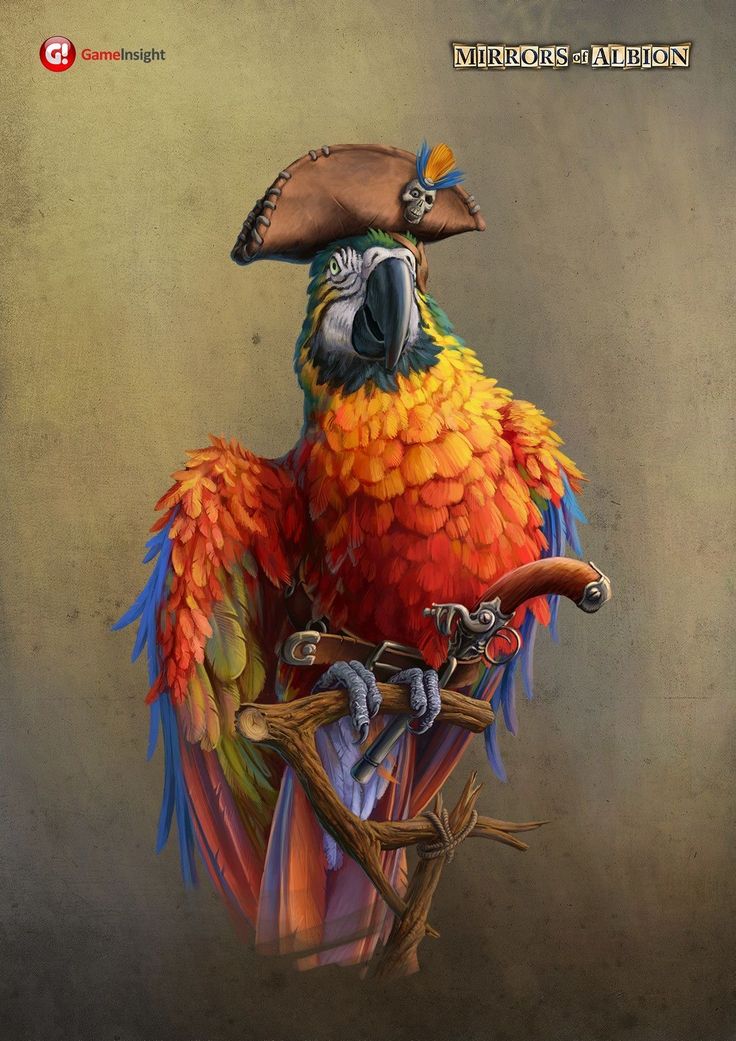
Parrots Were Status Symbols
A parrot’s colorful plumage is beautiful and eye-catching. In the Old World, parrots served as a status symbol to show off the wealth and success of an owner.
Back then, the money required to buy and maintain a parrot wasn’t a small amount. Most people were living in poverty and couldn’t afford expenses that were not vital to their survival.
Keeping a fancy pet was a luxury; some pirates may have wanted to flaunt that privilege like rich nobles. Pirates could show off their parrots to crewmates or people they met when they reached the port.
Parrots Are Social and Intelligent
Parrots are naturally social creatures and very intelligent. This would’ve been valuable to seamen, who needed company during their long voyages. A parrot would be able to talk and learn tricks. Although parrots only mimic human speech, this would help them seem more self-aware than a cat.
Because parrots easily bond with humans, training would have been less difficult than with monkeys.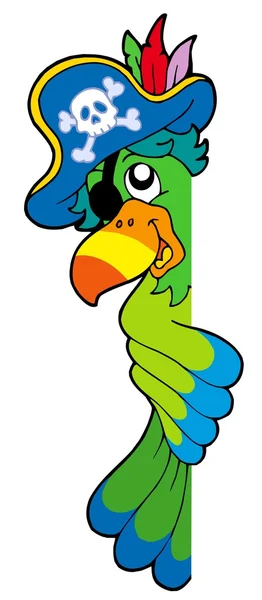 They’re also less likely to attack people when aggravated or curious. If they did strike out at crewmates, the damage would be far less severe than with a monkey’s teeth and claws.
They’re also less likely to attack people when aggravated or curious. If they did strike out at crewmates, the damage would be far less severe than with a monkey’s teeth and claws.
Parrots Can Fly
Parrots’ ability to fly is a big advantage for keeping them on ships. Like cats or monkeys, other animals might fall overboard while running around on deck or while the boat rocks during storms.
However, there is no chance of this happening to parrots. Pirates would be less likely to lose their beloved pets due to accidents or drowning. There is a disadvantage, as a parrot might be able to fly away.
Types of Parrots Pirates Had
Pirates would’ve had access to any parrots they raided from merchant ships. The most expensive type of parrot back then was the macaw, and pirates would have favored them.
Pirates might have caught these macaws in their native habitats in South and Central America and the Caribbean. Realistically, pirates would take what they found.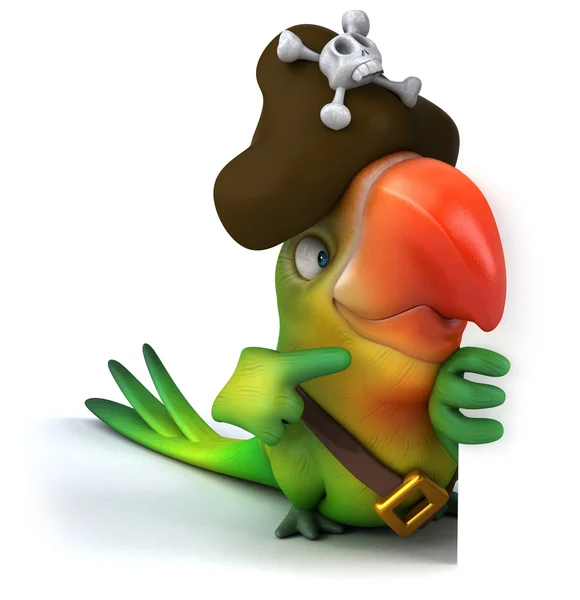 This includes any species found in the New World, depending on where the merchant was sailing from.
This includes any species found in the New World, depending on where the merchant was sailing from.
In fiction, the breed of parrot Long John Silver had is not mentioned in the novel. However, in the original 1934 movie adaptation of the novel, the parrot sitting on his shoulder is most likely:
- A double yellow-headed amazon
- A yellow-crowned amazon
A different breed of parrot can be seen in every adaptation of Treasure Island and every pirate film. They range from macaws to cockatoos. For example, in Pirates of the Caribbean, one character named Cotton has a blue and gold macaw.
What Did Pirate Parrots Say?
Pop culture has assigned many popular phrases to the parrots that pirates kept. In Treasure Island, Long John Silver’s parrot would often scream:
- “Pieces-of-eight! Pieces-of-eight! Pieces-of-eight!”
- “Stand by to go about!”
These are both phrases typical of pirates back then. In Pirates of the Caribbean, one character named Cotton has a parrot who talks on his behalf. Somehow, the mute Cotton managed to train his parrot to say:
Somehow, the mute Cotton managed to train his parrot to say:
- “Mum’s the word”
- “Aye, aye, sir”
In reality, the parrots would likely pick up whatever phrases they heard being said around the ship. These would include:
- Orders
- Slang
- Curses or expletives
All the phrases Cap’n Flint said in Treasure Island were probably learned this way. Cotton’s parrot must have also absorbed phrases from being around other pirates, which directly ties into why parrots can talk in the first place.
As very social creatures, parrots gather in flocks and communicate important information to fellow parrots via chirps and bird songs. While being among humans, parrots also mimic sounds to communicate and fit in.
Pirate Phrases To Teach Your Parrot
Do you want to teach your parrot some pirate phrases? Here are some more common ones that pirates used and their meanings:
- Ahoy, matey (hello, friend)
- Avast ye (pay attention/listen)
- Blow me down (‘wow,’ used when amazed or shocked)
- Old salt (an experienced sailor or pirate)
- Run a rig (to play a joke or prank on someone)
- Thar she blows (a whale sighting)
Famous Pirate Parrots
We know the names of famous pirates, both fictional and non-fictional, such as Blackbeard.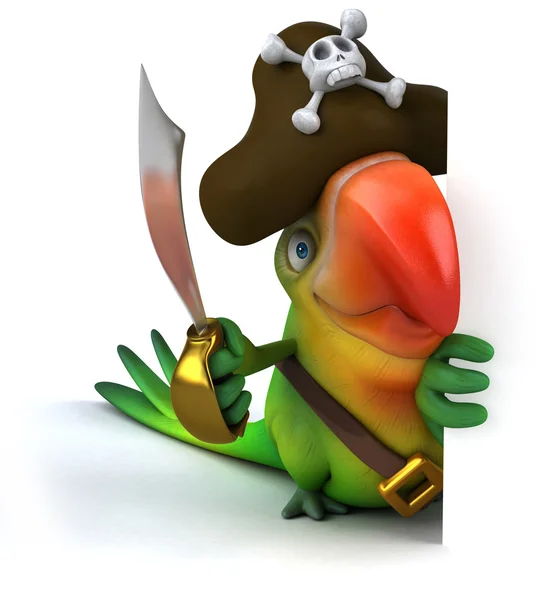 However, the names of their parrot companions are usually a mystery.
However, the names of their parrot companions are usually a mystery.
Even if historic pirates did keep parrots, there are no documented names for these pets. One reason could be that pirates didn’t even name their parrots. After all, most of them would have been kept as cargo before getting traded in the Old World.
There are some parrots that can be found in fiction, including:
- Cap’n Flint in Treasure Island was named after Long John Silver’s previous pirate captain.
- Cotton’s parrot in Pirates of the Caribbean doesn’t have an official name.
- Potty, the Parrot in Spongebob Squarepants, is the fake green parrot sidekick of Patchy the Pirate. Its name is a play on “Polly,” a popular parrot’s name.
Pirate-Inspired Names for Your Parrot
Are you looking to name your parrot? Choosing a pirate-inspired name could be a fun way to pay homage to the history and trope of pirates and their parrots. Here are great ones to choose from:
Names Inspired by Fictional Pirates
Want to give your parrot a name with prestige? Then pick from fiction’s most beloved pirates.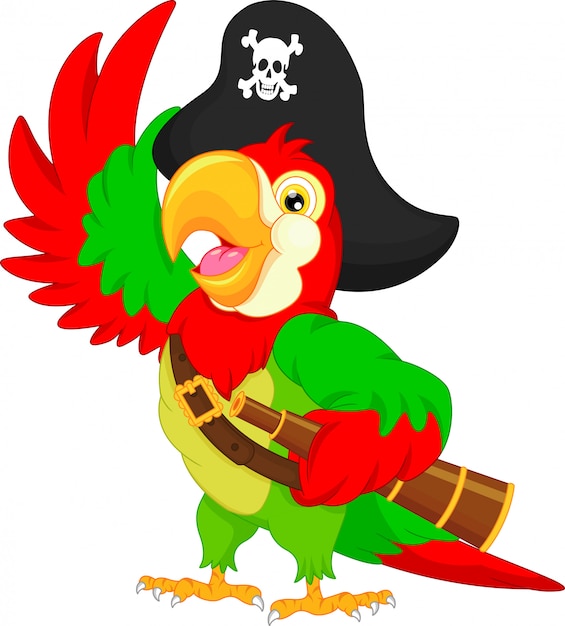
- Jack Sparrow from Pirates of the Caribbean.
- Barbossa from Pirates of the Caribbean.
- Davy Jones, the sailors’ devil. Davy Jones’ Locker means the bottom of the sea, where drowned sailors end up. This myth appears in fiction but also comes from real-life sailors.
- Captain Hook from Peter Pan.
- Long John Silver from Treasure Island.
Names Inspired by Real Pirates
If you want historical accuracy, you can name your parrot after a real pirate.
- Blackbeard: A famous real pirate responsible for many of the pirate tropes today.
- Queen Anne’s Revenge: The name of Blackbeard’s ship.
- Calico Jack: A real pirate and contemporary of Blackbeard.
- Anne Bonny: A woman pirate who left her husband to be with Calico Jack.
- Mary Read: Another woman pirate who sailed with Calico Jack.

- Madame Cheng: A woman pirate who took over her husband’s pirate confederation (which was the largest in history) in the 1800s.
- Barbarossa: A real pirate of the Mediterranean. His name means “red beard” in Italian.
Although pirates rarely kept parrots as companions, the two are still intrinsically tied to each other. Fiction has made them synonymous, and they’re a favorite trope even today. To play into that fun, you can teach your parrot pirate lingo and give it a name to match the aesthetic.
9 Myths about Pirates • Arzamas
You have Javascript disabled. Please change your browser settings.
CourseEconomics of PiracyAudio lecturesMaterialsBloodthirst, blasphemy, parrot on the shoulder, black marks, skull and crossbones flag - and other popular misconceptions
Authors Ekaterina Gushchina, Dmitry Shabelnikov
1Pirates are sea robbers
Henry Morgan captures Puerto Principe Wikimedia Commons Speaking of pirates, we usually mean only those who sink ships and rob at sea.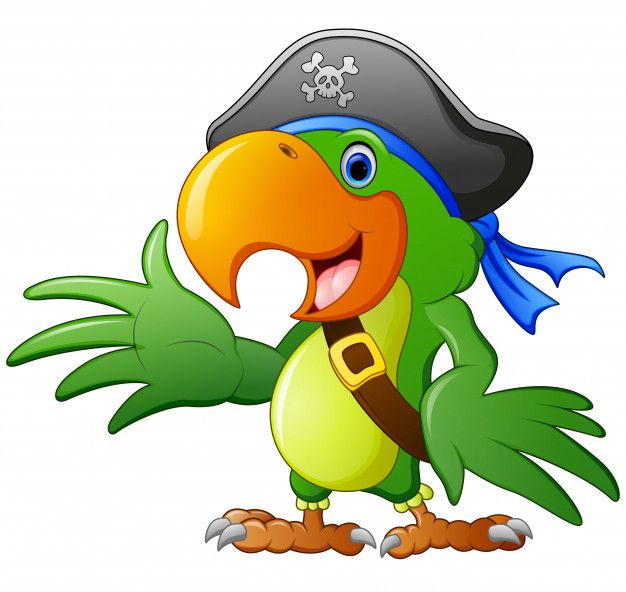 But pirates often went further, sacking coastal towns and fortresses, and could mount elaborate overland expeditions.
But pirates often went further, sacking coastal towns and fortresses, and could mount elaborate overland expeditions.
Thus, Hayreddin Barbarossa, a Muslim pirate operating in the Mediterranean Sea at the turn of the 15th-16th centuries, plundered Tunisia, Algeria, the island of Menorca and the coast of Spain. Captain Henry Morgan - the prototype of Captain Blood from Sabatini's novel "The Odyssey of Captain Blood" - was also a master of overland expeditions. In Cuba, he captured Puerto Principe with 700 people. Now the city of Camaguey in the central part of Cuba., Which was so far from the coast that no one expected an attack by pirates. The Panama expedition of Morgan is also known: first, he captured the fortified city of Portobello, left ships there and, having gathered a detachment, according to various sources, from 1200 to 1800 people, began crossing the Isthmus of Panama. His goal was to capture the largest and richest city of the colonies - Panama. The passage through the jungle was extremely difficult and lasted nine days.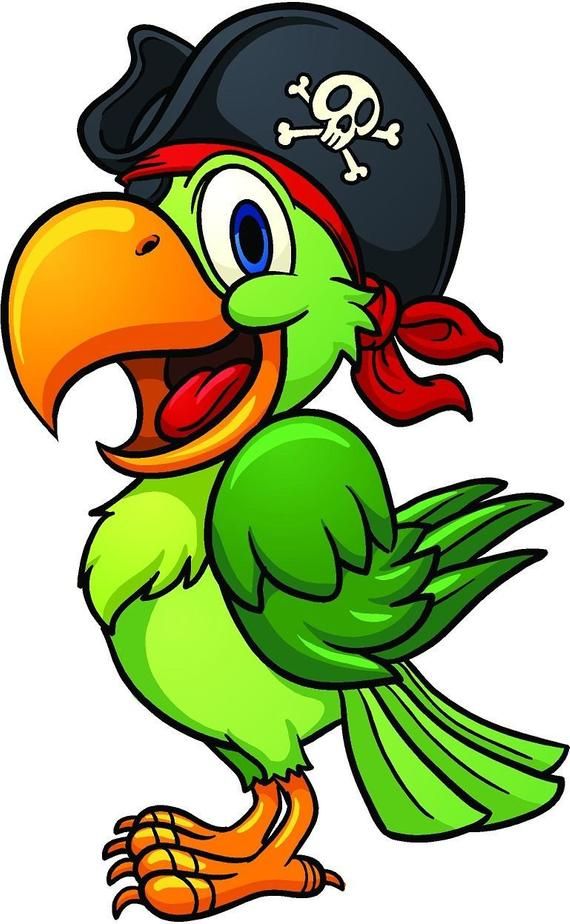 However, Morgan's people not only withstood, but also went on an assault, as a result of which the city surrendered and was plundered.
However, Morgan's people not only withstood, but also went on an assault, as a result of which the city surrendered and was plundered.
2Piracy is a male occupation
In 1343, Count Olivier IV de Clisson was captured in Paris, accused of conspiring with England against the French King Philip VI, and sentenced to death by beheading. His widow, Jeanne de Belleville, vowed to take revenge on the French crown for her husband's death.
Having sold all the property, jewelry and mortgaged the land, Jeanne equipped the warships and went to sea as a captain. She harassed and sank French merchant ships, killed members of their crews, and even attacked coastal settlements. But at some point, Jeanne's luck left her: after a crash in a storm, she lost not only ships, but also one of her sons. She had to flee to England, where she found support from King Edward III. After some time, Jeanne equipped new ships and continued to take revenge on the French even after the death of Philip VI.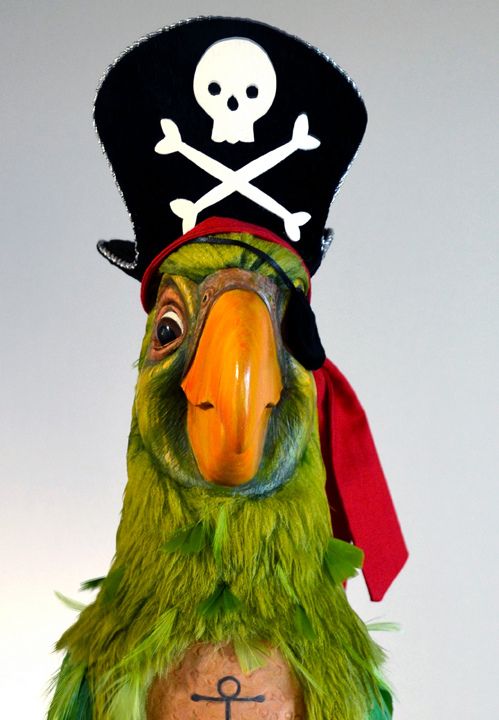 She stopped only a few years later, when she married again, now to the captain of the English troops.
She stopped only a few years later, when she married again, now to the captain of the English troops.
But the most famous woman in the golden age of piracy is Irish Anne Bonny, born around 1700. She was born as a result of a connection between a successful lawyer and his maid. Because of the scandal, the family had to move to the British colonies of America. There, her father purchased plantations, so Ann spent her childhood in a large colonial house, among luxury and servants. But, unfortunately for her parents, the girl had an indomitable temperament. In the descriptions of her youth, one can find stories that she loved to ride around the district, naked to the waist, and once stabbed a maid. Growing up, Anne ran away from home with an English sailor. The marriage was short-lived; soon she found herself a new husband - Jack Rackham, a well-known pirate on the East Coast of America, nicknamed Calico Jack - and became his right hand thanks to her talent for planning and fearlessness in battle.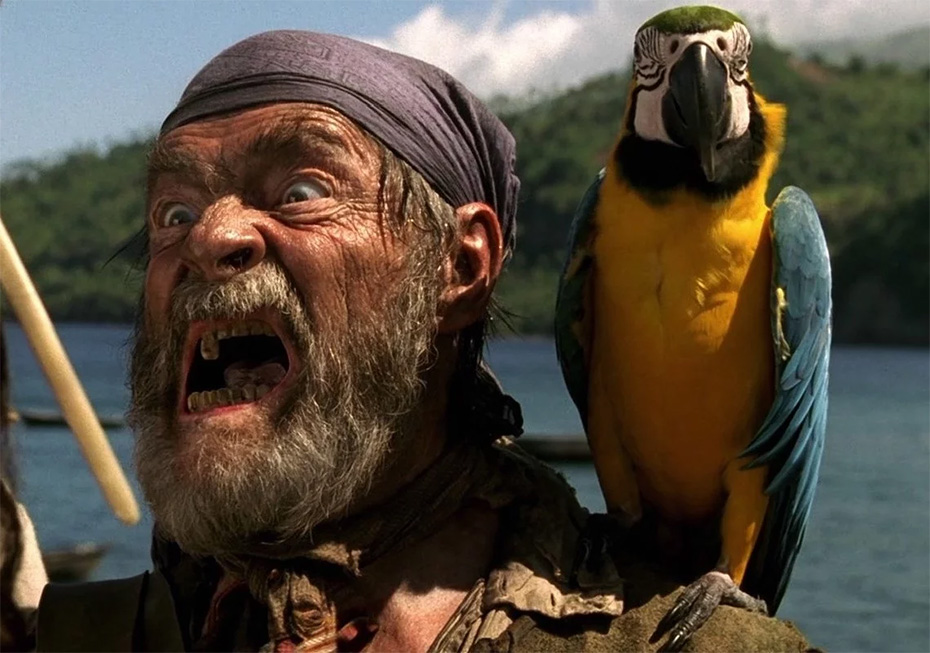
Jack and Ann robbed ships in the Caribbean. In 1720, a well-armed English warship met on their way - they accepted the battle and were taken prisoner. The court sentenced Ann to death, the execution of which was delayed due to her pregnancy. The execution was postponed several more times for unknown reasons, and it is not known how Ann's days ended as a result.
In connection with Anne Bonnie, another pirate is usually remembered - Mary Read. Since childhood, Mary has often used the trick of dressing up as a boy: first - to receive an inheritance, then - to join the British military. And in 1720, she met Ann and Jack, and then the three of them robbed. It is assumed that they were judged in the end also together.
There were also women among the pirates in the East. At the end of the 18th century, everyone in the Chinese seas was afraid of Lady Zheng (or Chin Xi). She was the wife of the pirate admiral Zheng Yi, who commanded six squadrons. At first, Ching Xi commanded one of the squadrons, and after the death of her husband, she took his place.
3Pirates did not recognize any law
Mostly former sailors of merchant and military ships became pirates. On such ships, the captains imposed cane discipline. For faults, the sailors were subjected to flogging, keeling. The sailor was dragged on a rope under the keel (lower beam) of the ship - few survived., They were shackled. The food was disgusting, cash payments were often pocketed by the captain and his assistants. An ordinary sailor was absolutely powerless. So it is not surprising that, having captured the ship, the pirates began by "administering justice" to the crew.
Unlike sailors, pirates had personal freedom. They could go ashore where they wanted, they could go to another ship. Pirate teams were a kind of self-governing associations with their own clear laws. The captain did not have absolute power; all positions, including the captain's, were elected. Decisions were made at a general meeting by voting. The captain sat at the common table and ate the same as everyone else.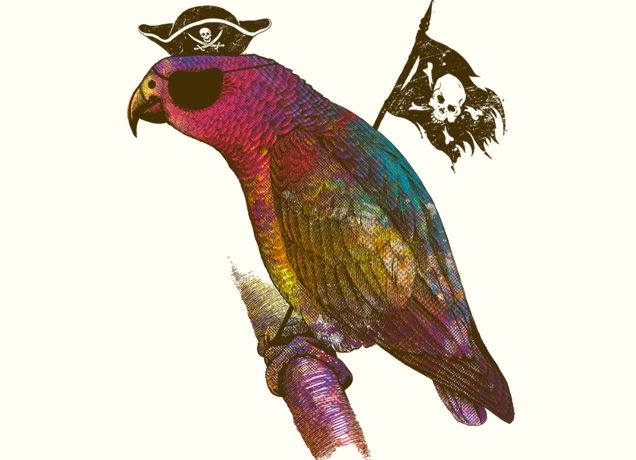 Often he did not even have his own cabin. In the pirate environment, a sense of brotherhood was quite strongly developed. They often changed ships; no less often, the teams of different ships either united or separated. All this led to the emergence of a subculture.
Often he did not even have his own cabin. In the pirate environment, a sense of brotherhood was quite strongly developed. They often changed ships; no less often, the teams of different ships either united or separated. All this led to the emergence of a subculture.
If in the past sea life pirates had no rights, then in the new one they were clearly prescribed. An agreement was concluded between the captain and the crew, in which the conditions for the division of production, compensation for injuries, pensions and payments in the event of death were specified in detail. Pirates could also be given awards for bravery. According to another scheme, the amount was not specified, but the shares were considered: each ordinary pirate received one share, the commander - two and a half shares, the navigator - one and a half shares, the same number - the doctor (for example, when at 19In 82, they raised treasures from the flagship of the pirate Sam Bellamy to the surface, then found that all the items were broken or cut into pieces).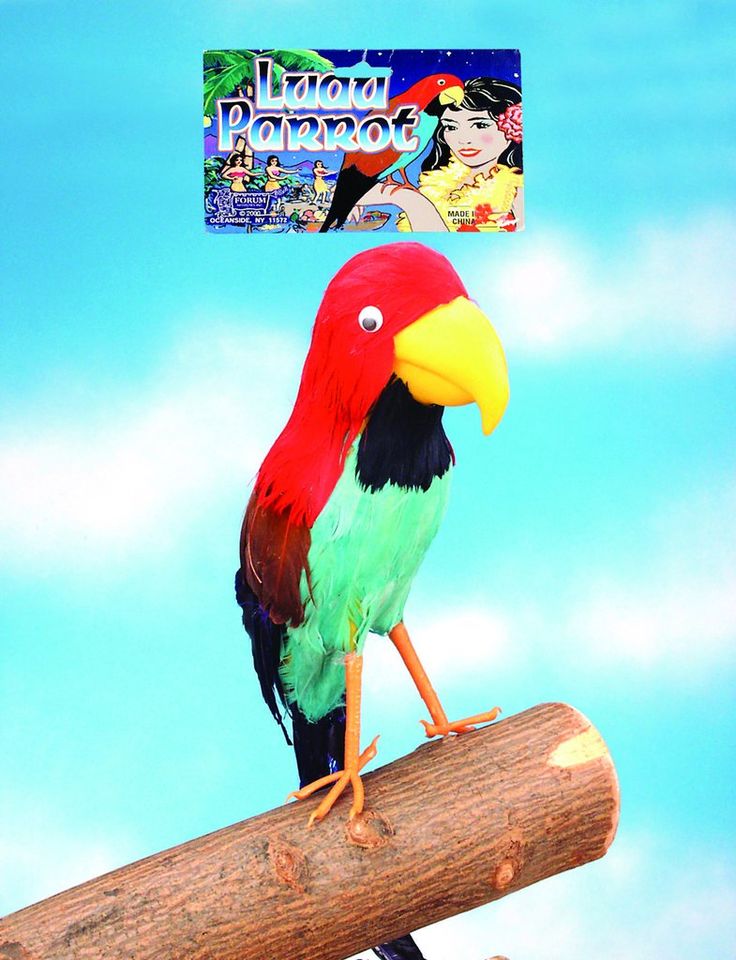 After the battle, within a day, the pirates had to hand over all the booty to the common cauldron. Then the team took an oath on the Bible. Before starting the division, the whole team - from the captain to the cabin boy - undressed and showed their clothes: if there was something hidden.
After the battle, within a day, the pirates had to hand over all the booty to the common cauldron. Then the team took an oath on the Bible. Before starting the division, the whole team - from the captain to the cabin boy - undressed and showed their clothes: if there was something hidden.
An ordinary pirate could also be sure that he would not be abandoned in case of injury: according to the code of command of the eighteenth-century English pirate George Lowther, “he who has the misfortune of losing a limb during battle receives compensation in the amount £150. He can stay with the team for as long as he wants." At the same time, the principle "No prey, no pay" - "No production - no pay" was in effect.
4Pirates feared neither God nor the devil
Sailors in general have always been known as lovers of swearing — calling on devils or insulting a saint.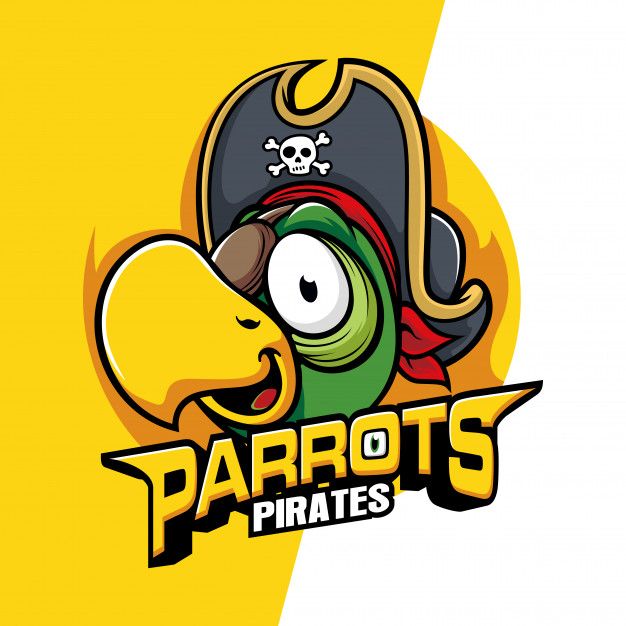 In the English Royal Navy of the Age of Discovery, captains were supposed to monitor the speech of their subordinates and punish intemperate language with reprimands and even flogging. Against their background, the pirates did not differ in particular blasphemy.
In the English Royal Navy of the Age of Discovery, captains were supposed to monitor the speech of their subordinates and punish intemperate language with reprimands and even flogging. Against their background, the pirates did not differ in particular blasphemy.
On corsair ships (corsairs were, in fact, legalized pirates Corsairs, or privateers, - captains and their teams using an armed vessel to capture merchant ships with the permission of the state authorities.) often served as a priest. For his work, he received, like the team members, a share of the loot. Moreover, the pirates had to take an oath on the Bible before dividing the booty and usually prayed when they sat down at the table and before the battle. In addition, often the political and economic motives of maritime robberies could be supplemented by motives of religious struggle: for example, crews consisting of French Huguenots, English Puritans and Dutch Calvinists could justify their actions by saying that this was a struggle with Spanish Catholics.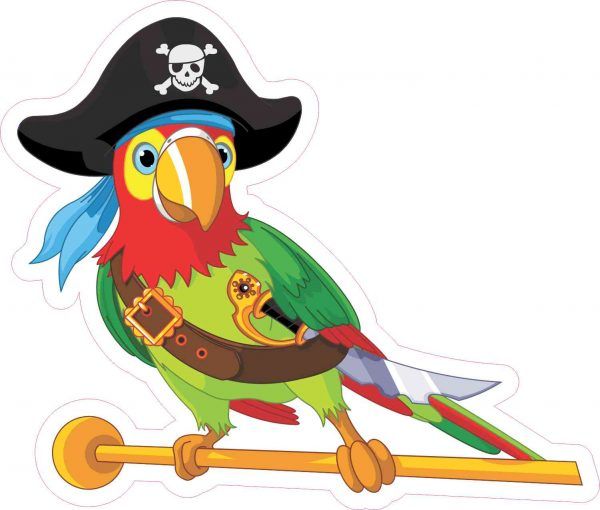
It would be correct to say that the pirates were superstitious. Some captains had astrologers with them who predicted the success of this or that enterprise. Most pirates wore all sorts of amulets. According to one version, earrings in the ears were a popular amulet against shipwrecks (they could also be a sign of a certain pirate status or just a valuable decoration). Among the pirates, it was believed that if you wear a piece of hangman's rope sewn into a hat, or a mummified hangman's hand, there is a chance that you will not be hanged. It was not bad to have an amulet in the form of an ax: it was supposed to bring good luck in battle. Pirates also did not shoot or eat seabirds, as they believed they were inhabited by the souls of the dead. Once Lionel Wofer (1640-1705) - a Welsh ship surgeon and explorer - loaded the mummy of an Indian boy onto a ship to bring it to England for research, but the pirates said that the compass would lie while the corpse was on board, and threw it into the sea.
But there are also cases of fanatical Christian faith among pirates in history. So, the French filibuster Raveno de Lussan, having captured the Spanish settlement, first of all went with the whole team to the local cathedral, listened to the thanksgiving hymn "Te Deum" there, and only then began arson and robbery (however, saving the images of the saints and making sure that no one church was unaffected). Pirates often made a vow before the battle - if they were lucky, they would donate a share of the booty to the Church. This did not prevent them from plundering monasteries and taking nuns and priests as hostages.
And of course, the pirates remembered God before they died. The account of the execution of the pirate John Quelch in 1704 records his last words: “I am not afraid of death, and the gallows does not frighten me either.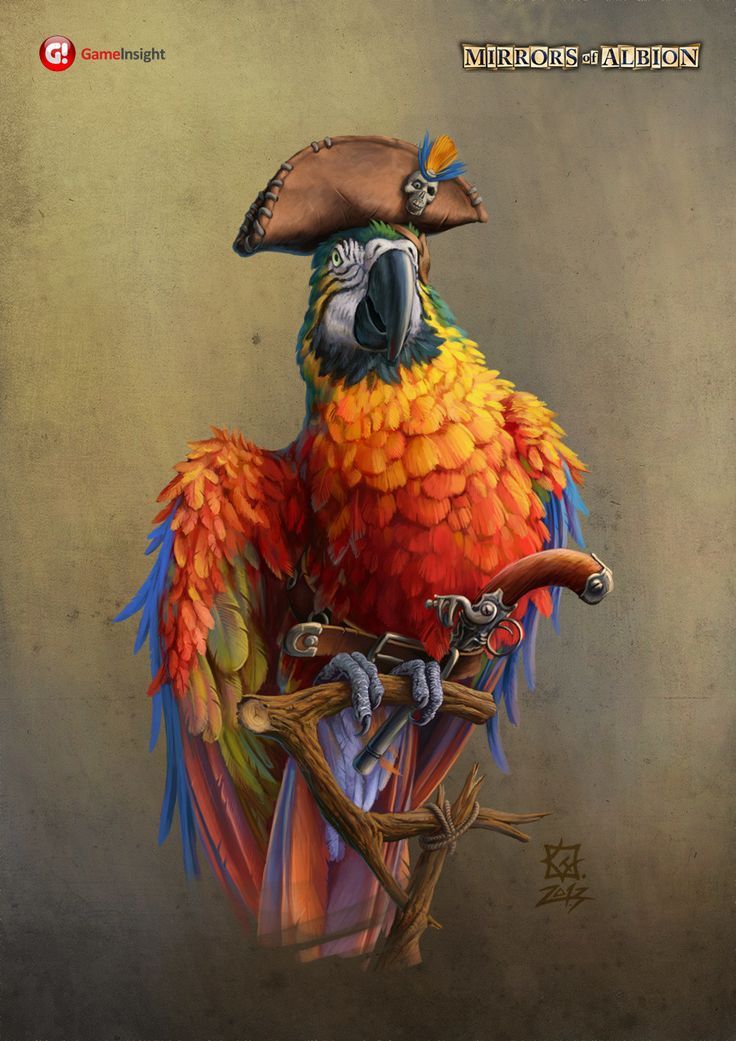 Only the great God and the verdict on the Day of Judgment fill me with horror.”
Only the great God and the verdict on the Day of Judgment fill me with horror.”
5 Pirates flew a black flag with a skull and crossbones
1 / 2
Bartholomew Roberts. Colored engraving. 1725 © Granger / Diomedia
2 / 2
Steed Bonnet. Colored engraving. 1725 © Granger / Diomedia
The classic pirate flag - a black panel depicting a skull and crossbones or blades - was indeed common among pirates, especially at the end of the golden age of piracy, in the 1710s-20s. This flag was then called "Jolly Roger" (Jolly Roger) or "Old Roger" (Old Roger). However, both the black color and the described pattern were only one of many options, and there was no canon in this sense.
Many descriptions of pirate flags are contained in the book “A General History of Robberies and Murders Committed by the Most Famous Pirates”, published in London in 1724 by a certain Charles Johnson. According to one version, the writer Daniel Defoe was hiding under this pseudonym.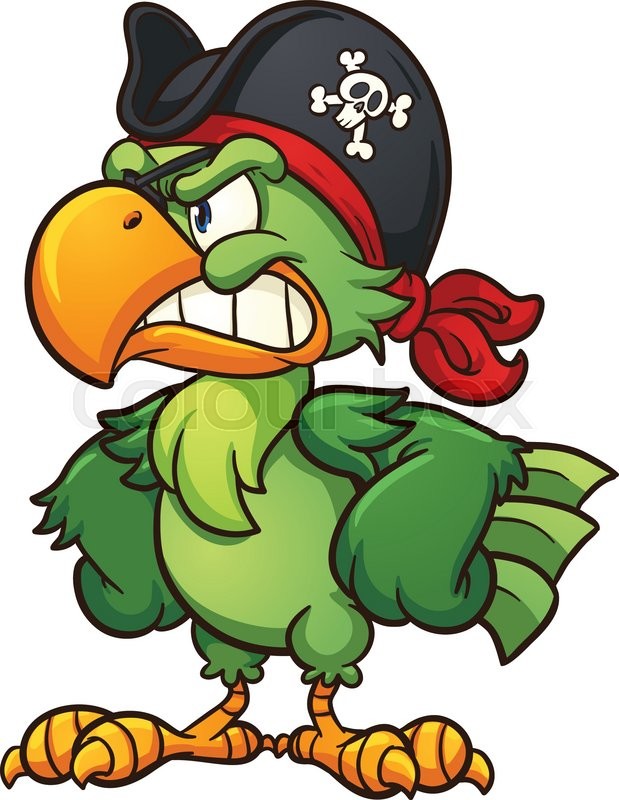 For example, in 1721 on The flag of Bartholomew Roberts (aka Black Bart) depicted a pirate and a skeleton with a dart in his hand, holding an hourglass. His later flag depicted a pirate with a dagger standing on two skulls marked with the letters ABH and AMH ABH is “a Barbadian's Head” (“Barbadian's head”), AMH is “a Martinican's Head” (“Martinican's head”). Many other versions featured a skeletal figure with a spear piercing or threatening to pierce a heart with drops of blood A description of such a flag is contained, for example, in an article in the Weekly Journal, or British Gazetteer dated 19October 1723 about the capture of a pirate ship in the West Indies .. Finally, there was often an image of a saber or a hand with a saber.
For example, in 1721 on The flag of Bartholomew Roberts (aka Black Bart) depicted a pirate and a skeleton with a dart in his hand, holding an hourglass. His later flag depicted a pirate with a dagger standing on two skulls marked with the letters ABH and AMH ABH is “a Barbadian's Head” (“Barbadian's head”), AMH is “a Martinican's Head” (“Martinican's head”). Many other versions featured a skeletal figure with a spear piercing or threatening to pierce a heart with drops of blood A description of such a flag is contained, for example, in an article in the Weekly Journal, or British Gazetteer dated 19October 1723 about the capture of a pirate ship in the West Indies .. Finally, there was often an image of a saber or a hand with a saber.
As for the black color, the black flag without any pattern was used by pirates from at least the beginning of the 17th century and continued to be used at the beginning of the next century along with the described options. In the 1720s, the black color of the flag alone was sufficient reason for British warships to attack a ship. However, earlier, red flags were also used quite often by pirates. According to one of the versions, which, however, does not find documentary evidence, the name Jolly Roger itself comes from the French joli rouge - "beautiful red".
However, earlier, red flags were also used quite often by pirates. According to one of the versions, which, however, does not find documentary evidence, the name Jolly Roger itself comes from the French joli rouge - "beautiful red".
According to some sources, on the same pirate ships, the black flag was used by default, and the red ("bloody") flag was used when the pirates showed that there would be no mercy for those who did not voluntarily surrender. In one of the sources of the 1720s, the British privateer Privateer, or privateer, is a pirate who has a special document - a certificate that allows you to attack the ships of a certain country. reports that the most common flag among pirates was the image of a black skeleton on a yellow background, which allegedly made it easy to confuse it with the flag of the Holy Roman Empire, which depicts a black eagle on a yellow background.
In other words, there was no "official" pirate flag, although certain colors and motifs - skull, skeleton, heart, spear, hourglass, saber - were indeed common. It is also important to understand that such flags were commonly used at the start of a fight, primarily to let the defenders know who they were dealing with and force them to surrender. The rest of the time, pirate ships could use national flags or sail without a flag at all.
It is also important to understand that such flags were commonly used at the start of a fight, primarily to let the defenders know who they were dealing with and force them to surrender. The rest of the time, pirate ships could use national flags or sail without a flag at all.
6Pirates carried a parrot on their shoulder
Jan Steen. A cage with a parrot. 1660s-70s Rijksmuseum The golden age of piracy coincided with the fashion for exotic animals and birds. Europeans willingly bought parrots, and for big money: they were attracted by their bright plumage and ease of maintenance. In London, livestock could be bought and sold at bird markets, such as Ledengal. Parrots were mainly brought from Mexico, from the Veracruz region. It was not too difficult to bring the birds to England: they ate a little - and what does not spoil in swimming (nuts, seeds). So for pirates, parrots could be not only faithful companions, but also a profitable commodity.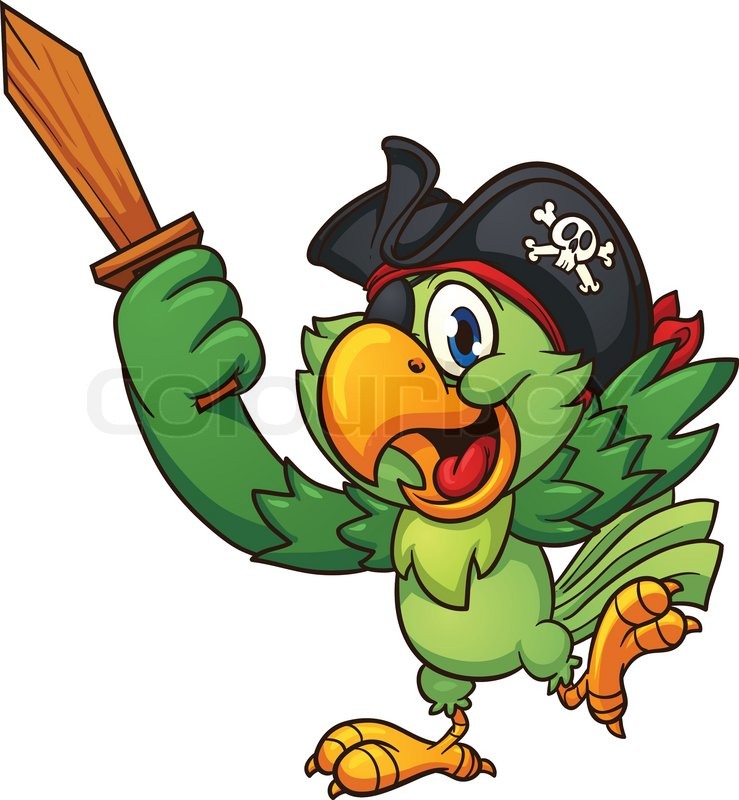 However, historians do not know for certain about a single pirate who walked with a personal parrot on his shoulder. Most likely, the parrot named Captain Flint from Treasure Island is an invention of the author.
However, historians do not know for certain about a single pirate who walked with a personal parrot on his shoulder. Most likely, the parrot named Captain Flint from Treasure Island is an invention of the author.
However, it is known that cats were willingly kept on pirate ships: firstly, they destroyed rats and mice, and, secondly, they were believed to bring good luck.
7Pirates - bloodthirsty and merciless
Pirates have a reputation for villainy, ruthlessly killing captives and sinking or burning captured ships. Of course, there were some of them. For example, the French filibuster François Olone or the pirate Edward Lowe: in a collision with them, people fought to the last, knowing that there would be no mercy.
A member of Edward Low's team kills a wounded Spaniard. Engraving from the book "A General History of Robberies and Murders Committed by the Most Notorious Pirates". 1724 © Culture Club / Getty Images Cases of brutal execution and torture have always been reported by numerous eyewitnesses, who, apparently, were left alive on purpose to create the necessary reputation.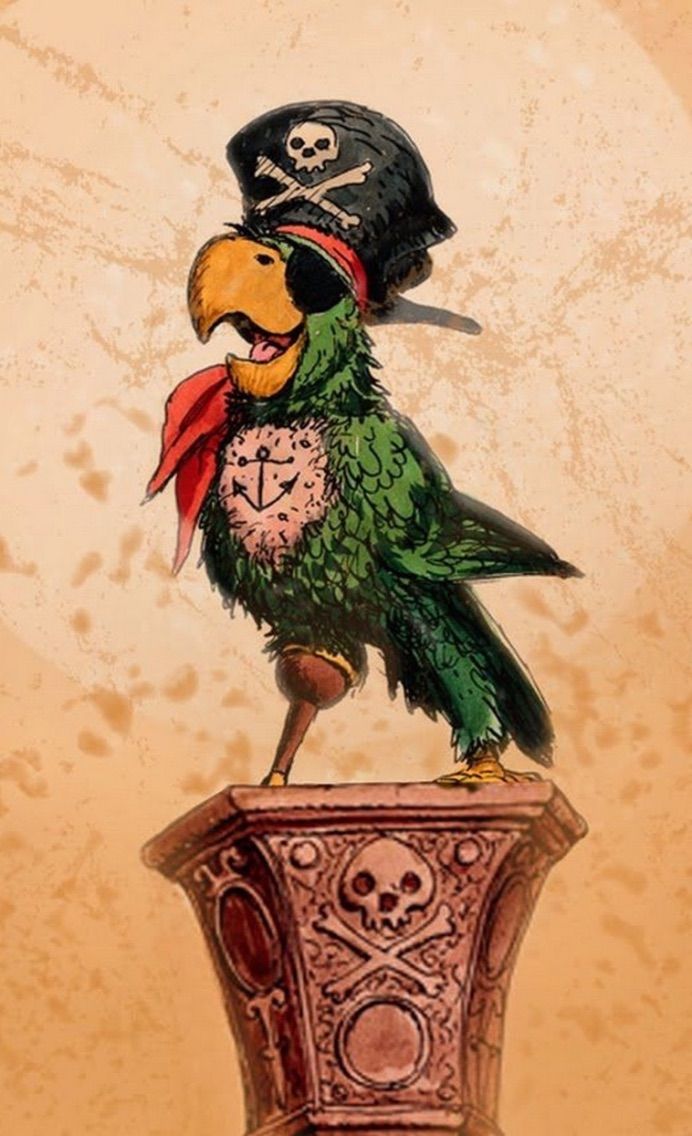 The fear that the pirates instilled in potential victims made them unable to resist and made it easier to capture ships. It is better to surrender, to hand over all the money, jewelry and goods, avoiding torture and murder. The pirates were interested in saving resources and crew, that is, avoiding a fight if possible.
The fear that the pirates instilled in potential victims made them unable to resist and made it easier to capture ships. It is better to surrender, to hand over all the money, jewelry and goods, avoiding torture and murder. The pirates were interested in saving resources and crew, that is, avoiding a fight if possible.
Recall that, economically, the goal of pirates was to seize property and people, who, in turn, could be made members of a pirate crew or sold as slaves. Usually, the captured team was simply beaten, property and catch (if they were fishing vessels) were thrown overboard, equipment was rendered unusable and valuables were taken away.
American historian, piracy researcher David Moore wrote about Edward Teach, a terrible and terrible pirate nicknamed Blackbeard, who became the prototype of Captain Flint in Treasure Island: “... there are no documents that would provide evidence showing that Blackbeard or killed, with the exception of the final fight, and even in this case it can be proved that he defended himself first of all” L.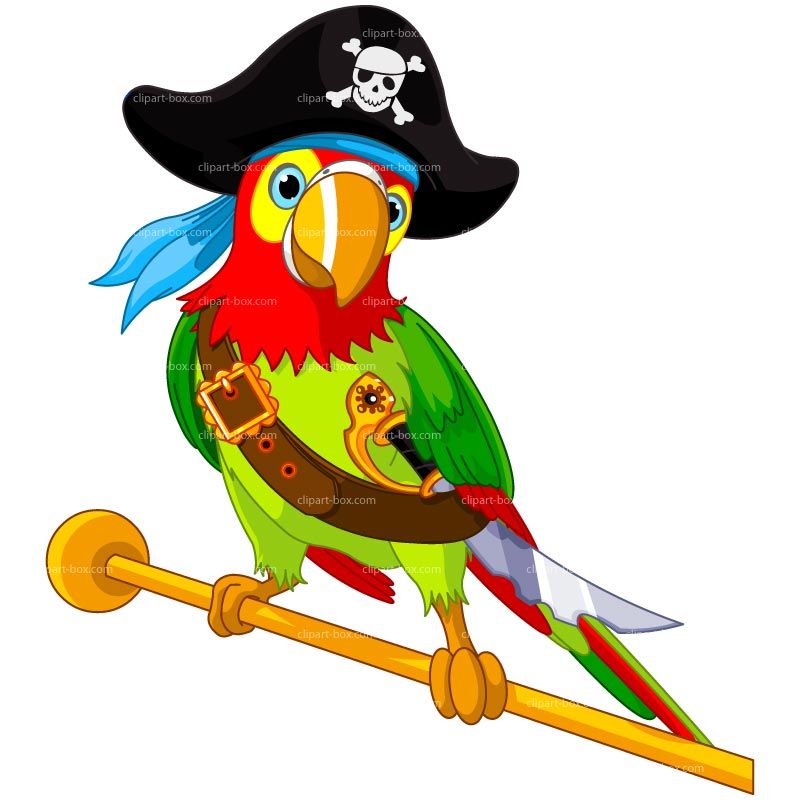 Osborne. A pirate's progress: How the maritime rogue became a multicultural hero // Lingua Franca. 1998 March..
Osborne. A pirate's progress: How the maritime rogue became a multicultural hero // Lingua Franca. 1998 March..
8The pirates were very rich and buried treasure in the ground
Henry Morgan. Illustration from the book "History of Pirates and Corsairs of the Ocean and the Mediterranean Sea". 1847 © Stefano Bianchetti / Corbis via Getty ImagesDespite stories of fabulously wealthy and successful pirates, crew members were by no means well off in old age (if they didn't end up on the gallows). In addition, most of the booty was provisions or goods that still needed to be able to sell. Moreover, the pirates, as a rule, did not care much about the future and easily lost their fortunes, spending money on booze, women, cards, luxurious clothes and various folly.
Piracy historian Alexander Exkvemelin recalled the famous 17th-century pirate Roque the Brazilian: “My former master often bought a barrel of wine, rolled it out into the street, knocked out a stopper and sat down next to me.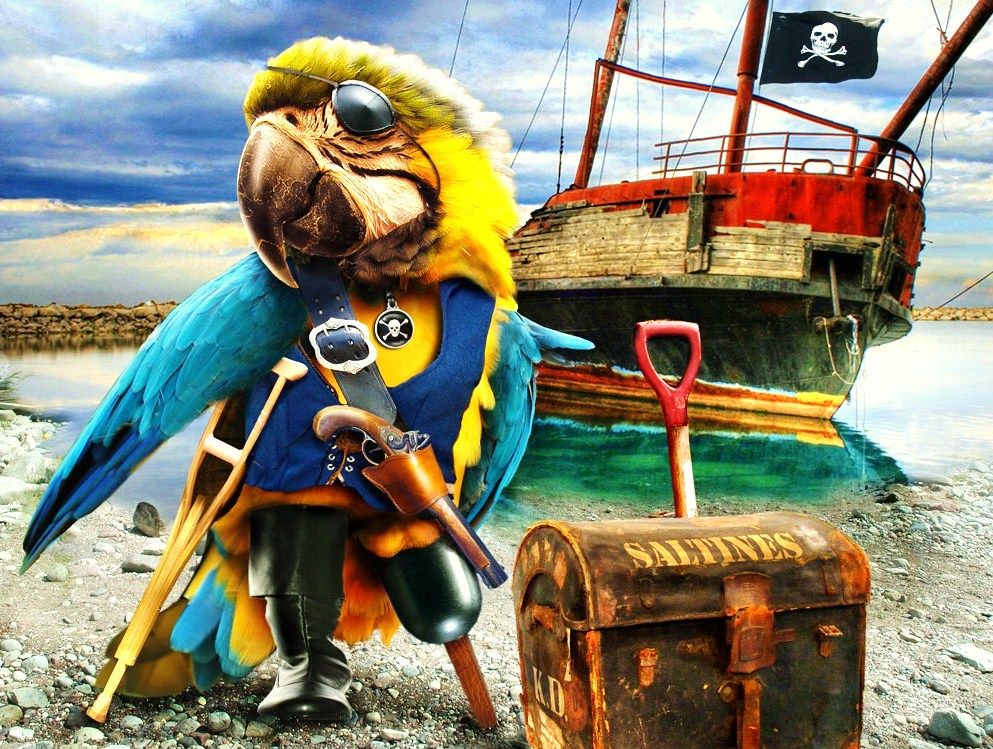 All those who passed by had to drink with him - try not to drink if you are treated at gunpoint, and my master did not part with a gun. Quoted from: A. Exkvemelin. "Pirates of America". 1678. Transl. from gal. V. Aronova..
All those who passed by had to drink with him - try not to drink if you are treated at gunpoint, and my master did not part with a gun. Quoted from: A. Exkvemelin. "Pirates of America". 1678. Transl. from gal. V. Aronova..
9Pirates used the black mark to send an ominous message
Pirates carve a black mark from the Bible. Illustration by Newell Converse Wyeth for Treasure Island. 1911 Wikimedia CommonsThe black mark as a method of warning or sentencing is described twice in Treasure Island (1883) by Robert Louis Stevenson:
“On the floor near the captain's hand lay a tiny circle of paper smeared on one side with something black. I had no doubt that this was the black mark. I grabbed it and noticed that on the other side it was written in beautiful, clear handwriting: “We give you until ten in the evening.”
“She was the size of a crown. One side is white - Dick cut the very last page of the Bible - on the other side were printed verse two from the Apocalypse.
I remember, by the way, two words: "dogs and murderers." The side with the text was smeared with soot, which stained my fingers. And on the clean side, one word was written in charcoal: "Deposed."
In fact, the term black spot (“black mark”) and how it looks - a black paper circle on one side and with a threatening message on the other - is an invention of Stevenson. There is no documentary evidence of the use of the black mark by pirates.
Sources
- Gubarev V. K. Tortuga. History of the oldest pirate base in the Caribbean (1492-1694).
Yekaterinburg, 2017.
- Kopelev D.N. Piracy in the 17th–18th centuries. At the forefront of world politics.
St. Petersburg, 2013.
- Kopelev. D.N. Division of the Ocean in the 16th-18th centuries. Origins and evolution of piracy.
St. Petersburg, 2013.
- Makhovsky Ya. History of maritime piracy.
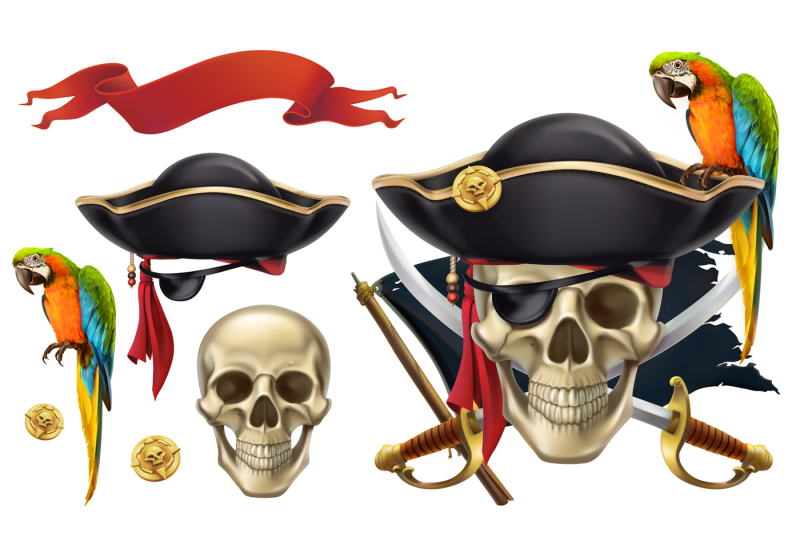
M., 1972.
- Mozheiko I. V. Pirates, corsairs, raiders. Essays on the history of piracy in the Indian Ocean and the South Seas (XV-XX centuries).
M., 1991.
- Hanke H. Sailor, death and the devil.
M., 1989.
- Constantine S. The Pirate, the Governor and the Secretary of State: Aliens, Police and Surveillance in Early Nineteenth-Century Gibraltar.
The English Historical Review. Vol. 123. No. 504. Oxford University Press, 2008.
- Fox E. T. Jolly Rogers. The True History of Pirate Flags.
2015.
- Henneman J. B. Olivier de Clisson and Political Society in France Under Charles V and Charles VI.
University of Pennsylvania Press, 1996.
- Johnson C. A General History of the Pyrates, from Their First Rise and Settlement in the Island of Providence, to the Present Time.
London, 1724.

Tags
Myths
18th century
16th–17th centuries
New podcast by Arzamas and Rybakov Fund How Russia Studied
Alexander Arkhangelsky talks with historians and philologists about the history of Russian education. The first issue is about why the Russian state had an interest in education in the 18th century and who took advantage of it
Do you want to be aware of everything?
Subscribe to our newsletter, you'll love it. We promise to write rarely and to the point
Courses
All courses
Special projects
Audio -lectures
33 minutes
1/5
Pirates in Antiquity
How Pirates lived during the Homer, why it was more profitable in ancient Greece and Rome than to trade, and to trade, and how piracy contributed to economic cooperation
Reads Yulia Vymyatnina
How pirates lived in the time of Homer, why it was more profitable to rob in Ancient Greece and Rome than to trade, and how piracy promoted economic cooperation
34 minutes
2/5
Maritime robberies in the Middle Ages
Why European states were interested in piracy, how they fought foreign sea robbers and encouraged their states
Reads4 Why were European piracy 9003
49 minutes
3/5
The golden age of piracy
kings
Reading Yulia Vymyatnina
How pirates appeared in the era of the Great Geographical Discoveries, who received colossal incomes and became famous, and how they earned for their kings
39 minutes
4/5
How pirates work in the modern world 904 903 maritime robberies in Somalia, Asia and Latin America and why they cannot be stopped
Reads Yulia Vymyatnina
How maritime robberies work in Somalia, Asia and Latin America and why they cannot be stopped
46 minutes
5/5
Digital piracy
Why theft of potential income is also piracy, who suffers from it and when it can be beneficial to the copyright holder
Reading Yulia Vymyatnina
who suffers from it and when it can be beneficial to the copyright holder
Materials
9 myths about pirates
Bloodlust, blasphemy, a parrot on the shoulder, black marks - and other popular misconceptions
"This is exactly taken from my poems": Pushkin, Chekhov and Mandelstam - on copyright
Russian writers complain about intellectual property violations
The most famous pirates About the projectLecturersTeamLicencePrivacy PolicyFeedback
Arzamas Radio GooseGooseArzamas
stickers OdnoklassnikiVKYouTubePodcastsTwitterTelegramRSSHistory, literature, art in lectures, cheat sheets, games and expert answers: new knowledge every day
© Arzamas 2022.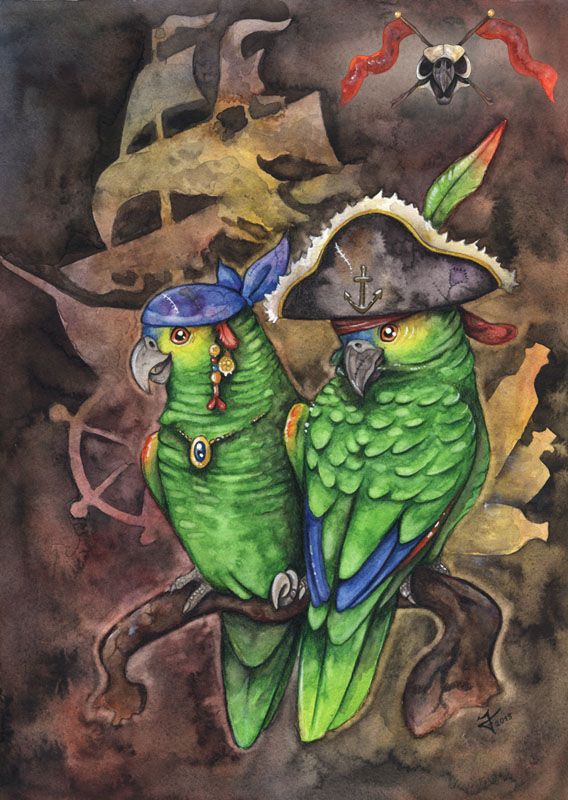 All rights reserved
All rights reserved
What can I do to avoid losing my subscription after Visa and Mastercard leave Russia? Instructions here
What Pirates Really Got Parrots For
?-
So how did things really go with the parrots?
In fact, the image of a pirate with a parrot on his shoulder is an artistic fiction, which is firmly rooted in the public consciousness thanks to the brilliant work of Robert Louis Stevenson "Treasure Island". The local character, the one-legged pirate Long John Silver, carried a parrot named Captain Flint on his shoulder. Due to its popularity, "Treasure Island" has formed the lion's share of clichés and stereotypes about the pirate brethren. Despite all the brilliance of the work, it is still a romanticization of reality in its most neglected form.
Contrary to popular belief, pirates did more than loot.
 The raider business was not only dangerous, but also extremely unstable, in which a lot depended on the luck or corruption of officials on land, which not every robber could afford. Therefore, the pirates were also actively engaged in trade (including slaves), kidnapping and smuggling. The dashing brethren traded, including a variety of exotic animals, which were especially valued by representatives of the wealthy classes in the Old World.
The raider business was not only dangerous, but also extremely unstable, in which a lot depended on the luck or corruption of officials on land, which not every robber could afford. Therefore, the pirates were also actively engaged in trade (including slaves), kidnapping and smuggling. The dashing brethren traded, including a variety of exotic animals, which were especially valued by representatives of the wealthy classes in the Old World. Parrots and little monkeys were one of the main pirate exports. Due to the rarity and complexity of delivery, these animals cost a lot of money in modern times. In terms of modern money, one parrot could cost from several hundred US dollars to many thousands (the situation, however, has not changed much). The cheapest parrot in Europe cost about 3 monthly salaries (salaries) of a British Royal Navy sailor.
Thus, all the monkeys and parrots that were present on pirate ships, as a rule, were nothing more than a commodity for wealthy gentlemen greedy for curiosities.
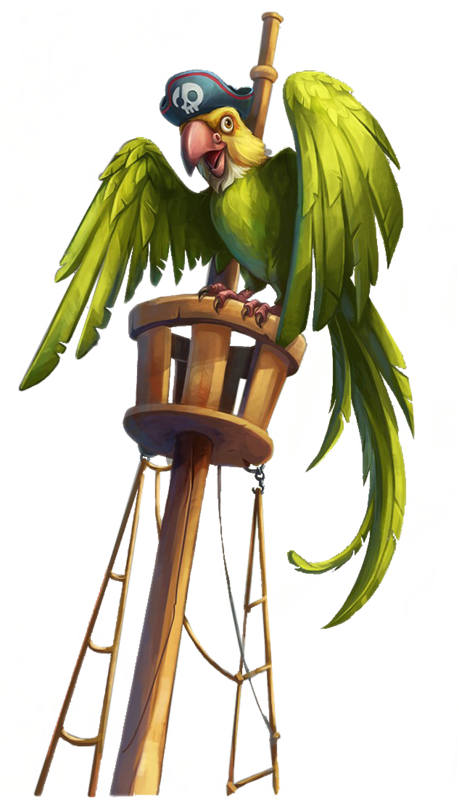
Tags: Questions
-
A pedestrian has crossed a zebra, but is still far from the car: let him through?
What? A very common situation even in our "Zamkadie". If the road is multi-lane, it often turns out that the pedestrian ...
-
What does the word "bajkhovy" mean on tea packages
Today it is hard to believe that black tea, familiar to everyone and everyone, is a drink that appeared in Europe relatively recently.
